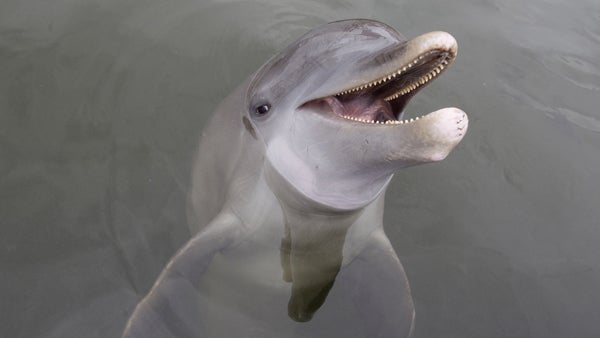N.J. steps up response to dolphin deaths

(AP Photo, file)
New Jersey is beefing up efforts to get a handle on a recent spike in bottlenose dolphin deaths. Officials estimate upwards of 70 dead or dying dolphins have washed up along the Jersey coast, second only to New York, which has identified more than 100.
The situation has put a strain on the region’s marine mammal stranding center, so New Jersey is now offering up its agriculture lab to do testing. About $92,000 in federal funds will also boost monitoring and recovery efforts along the shore.
“You know, everyone wants to know how widespread this is,” said Lawrence Hajna, a spokesperson with New Jersey’s Department of Environmental Protection
The Marine Mammal Stranding Center in Brigantine has been on the front lines of identifying and testing dolphins. Bob Schoelkopf, co-director of the nonprofit, said the added resources mean quicker responses to the situation.
“Just travel time alone is cut in half by taking it to the state [agriculture] lab,” said Schoelkopf. Prior, the center brought the dolphins to a lab at the University of Pennsylvania. “We calculated we put just 4,600 miles on the van just going to the lab with animals.”
This week, the National Oceanic and Atmospheric Administration identified a tentative cause in the deaths: morbillivirus. About a quarter of the dolphins found in New Jersey have tested positive for the naturally occurring virus, which is similar to measles in humans.
While the likely culprit has been identified, Hanja said heightened testing and tracking are still needed.
“It’s to gather more scientific evidence, to also help understand how many dolphins are going to die in this event and possibly what can be done in the future,” Hajna said.
There’s no way to treat the virus in the wild, but Hajna thinks the dolphin population be better positioned to survive this outbreak compared to the last major one in the 1980s.
“At that time the morbillivirus is estimated to have knocked out about half of the population, but the population was much smaller at the time,” he said.
Marine experts aren’t sure yet whether this most recent episode is tapering off or not. The virus can’t be transmitted to humans, but Hajna and others caution against approaching a dead or dying dolphin.
WHYY is your source for fact-based, in-depth journalism and information. As a nonprofit organization, we rely on financial support from readers like you. Please give today.

